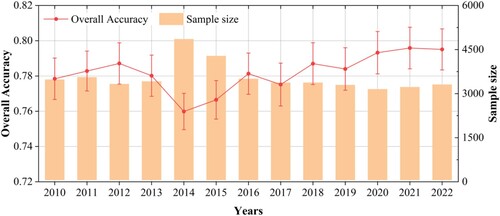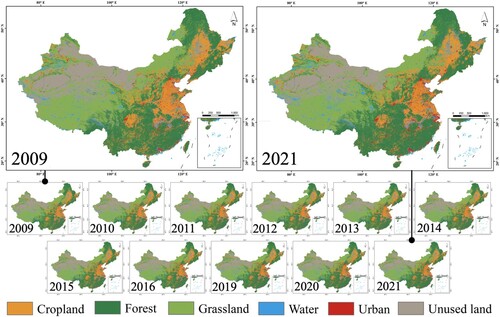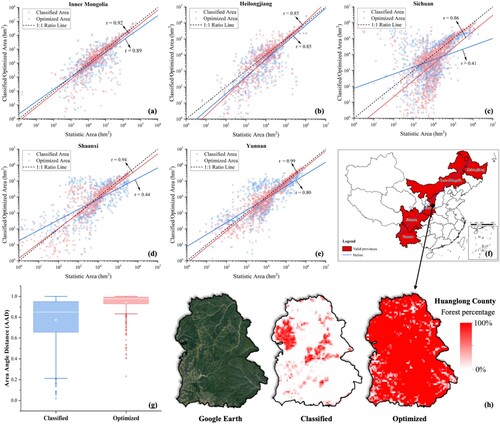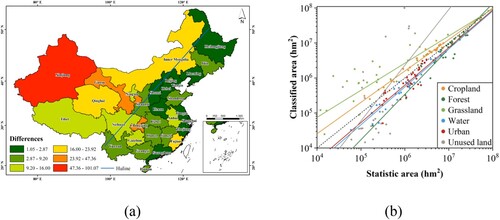Figures & data
Figure 1. Workflow of the LULC product update using LandTrendr and CCDC, and optimization using the statistics space allocation method.
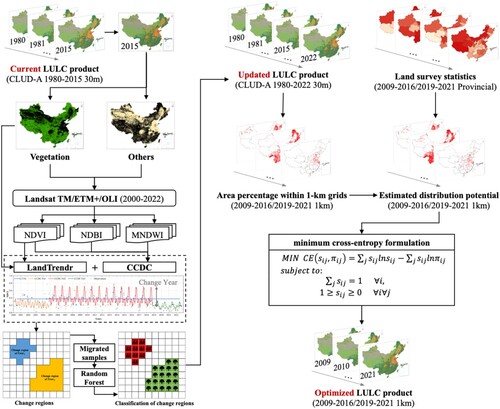
Figure 2. Change detection examples for a single pixel (the red dot on the true color combined Sentinel 2 images or Google Earth images on the blow). The combination of CCDC and LandTrendr can (a) filter out abrupt vegetation LULC changes detected by CCDC in Baoding, Hebei Province; (b) complement slow vegetation restoration undetected by CCDC in Yuanping, Shanxi Province; and (c) complement new buildings undetected by LandTrendr in Tangshan, Hebei Province.
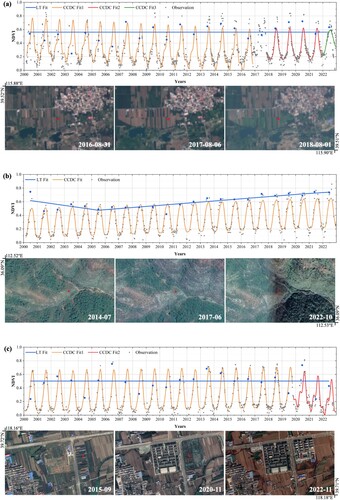
Figure 3. The workflow of land use/land cover (LULC) map optimization using the statistics space allocation method with Shaanxi Province as an example. (IDW: inverse distance weighted)
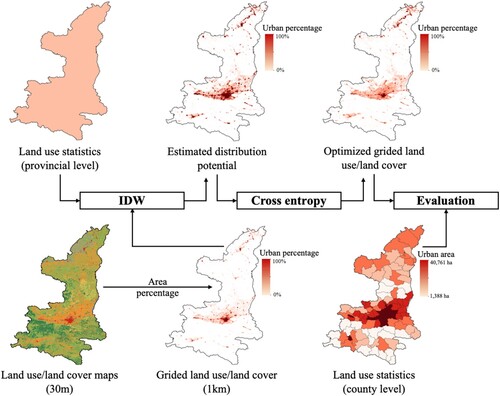
Figure 4. Updated annual land use/land cover (LULC) maps of 2022 in China (for 2016–2021 maps, please see Figure S1.)
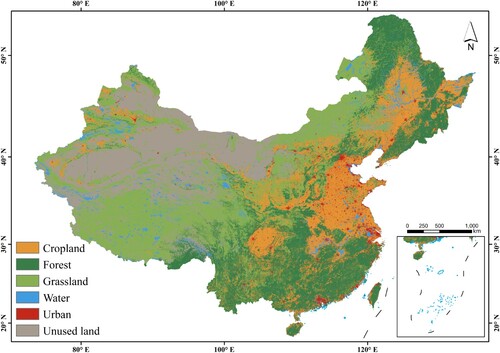
Figure 5. Annual area changes of CLUD-A, CLCD, and ESA CCI LC by different LULC types from 2010 to 2022.

Figure 7. Examples of LULC changes during 2015–2022. (a) Construction of agricultural facilities in Shannan, Tibet; (b) water expansion caused by the construction of water conservancy infrastructure in Xinyang, Henan; (c) newly reclaimed cropland in Hangzhou, Zhejiang; (d) construction of Beijing Daxing International Airport.
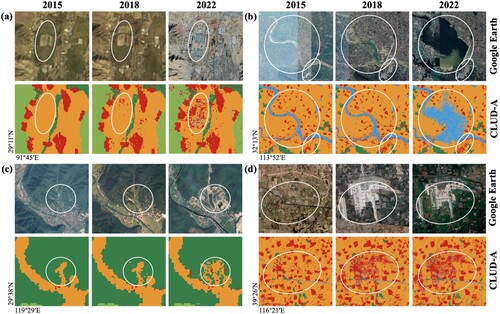
Supplemental Material
Download MS Word (1.4 MB)Data availability statement
The data supporting the findings of this study are available from the corresponding author upon reasonable request.

